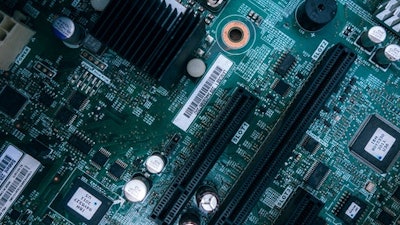
The omnichannels that emerged over the past 18 months have led to massive supply chain complexity, causing retailers and brands to consider many more channels, each with their own unique stock journeys. Whether it was consumers who forced corporations to change, the reverse or a combination, the current omnichannels are most likely here to stay.
Moreover, consumers' expectations are higher than ever, with speed and accuracy seen as standard and anything less is an outrage. Pair that with increased reverse logistics, return challenges and inventory issues and the supply chains of today have no choice but to get smarter. To overcome these challenges, leading retailers and consumer package goods (CPG) brands use intelligent automation (IA) to become more accurate and agile.
IA allows organizations to automatically improve digital processes around physical robotics with control systems through self-learning and self-managing systems. Although it encompasses many technological advancements, IA is primarily concerned with business processes. Technology is just a means of optimizing processes; it helps customers receive the best value by ensuring that the right tools are ready at the proper time for the appropriate situation. The greatest challenge for IA is guaranteeing that those business processes are fully controlled and managed and leveraging the correct data. Being able to make the right decisions and predictions consistently and reacting quickly to strange or even unplanned events is impossible without having access to data.
Many experts believe that IA is the future of CPG because it helps these companies keep pace with the fast and often uncontrollable market by providing a fully controllable platform that comprehends any unforeseen challenge and presents the best solution to the end-user. Similarly, IA can help retailers and CPGs understand shoppers' habits on a store-by-store basis, enhance availability across supply chains and simplify the manufacturing process. Furthermore, it enables supply chains to improve inventory allocation, distribution and order placement to avoid profit loss.
4 pillars of data-driven intelligence process management
IA is driven by data, context and intelligent technologies such as artificial intelligence (AI), natural language processing (NLP) and recommendation engines, making it more powerful and capable than process-driven automation. And, as industry players move toward data-driven intelligent processes management to shape and achieve business outcomes, they are guided by four pillars -- digitization, sense, adjust and react. The four are closely connected and are critical to improving supply chain processes.
The first, digitization, focuses on improving process efficiency, effectiveness and control and manifests at the task and process level as well as with orchestration and digital operations. Companies need to digitize processes to manage them efficiently. Plus, it will enhance transparency and give CPGs greater control. Digitization must come first – otherwise, nothing will make sense from an IA, control or product point of view. Businesses must also determine which processes to digitize and in what order.
Next, a company needs to make sense of all its data to track performance and outcomes and generate insights. Logically following from digitization, the sense pillar represents the stage where a business obtains the necessary data from its processes for reporting and analytics as well as understanding patterns and making decisions. By breaking down business processes into data, organizations can determine if they are following their KPIs, and - if they aren't - it empowers them to drill down to the root causes of their supply chain problems, like bottlenecks and friction points, to solve them.
After sense is the adjust pillar. This pillar emphasizes the application of the recently acquired data-driven insights to adapt processes or decisions. Because nothing remains constant for CPG supply chains (for example, COVID-19), companies must make intelligent decisions based on data rather than anecdotes. Moreover, to ensure that adjustments are quick and robust, it's vital that solutions, like autonomous processes, are based on the right technologies. Companies should also design malleable processes should the data reveal that adjustments are necessary.
Lastly is the react pillar, which augments human execution and maintains compliance during irregular operational events via intelligent situation management, orchestrated situation management, decision support and human-based notifications. React fits into the supply chain puzzle because after a business has digitized its processes, made sense of its data and adjusted processes where necessary, it also needs to react to changes. Additionally, the power to react relates to the ability to choose the best course of action timely.
What isn't intelligent automation?
In order to answer this question, it is helpful to examine the differences between artificial intelligence and augmented intelligence. The former operates without human assistance and typically works inside very narrow criteria freeing people of repetitive tasks. The latter is concerned with analyzing data, recognizing patterns and then reporting those patterns to the human user for a final decision.
Augmented intelligence operates on the same principles as IA. Both employ machine learning and predictive analytics of data sets to provide humans with actionable insights to enhance their decision-making ability. Neither makes decisions for humans, but they do help people find the needle in the haystack. By using deep learning, these technologies can filter through gigabytes of big data to uncover the one piece of information that is of actual relevance to the human decision-maker.
IA is not cognitive; it is not thinking. Instead, IA gets restrained by rules, which it applies based on inputs it receives. Data-driven and rules-based, IA is very good at making predictions, discovering insights and presenting humans with the data they need. Perhaps at some stage in time, it will be cognitive, but not now. Nevertheless, retailers and CPGs faced with unprecedented shortages, delays and the impending holidays, it has never been a better time to advance the capabilities of supply chains with IA.




















